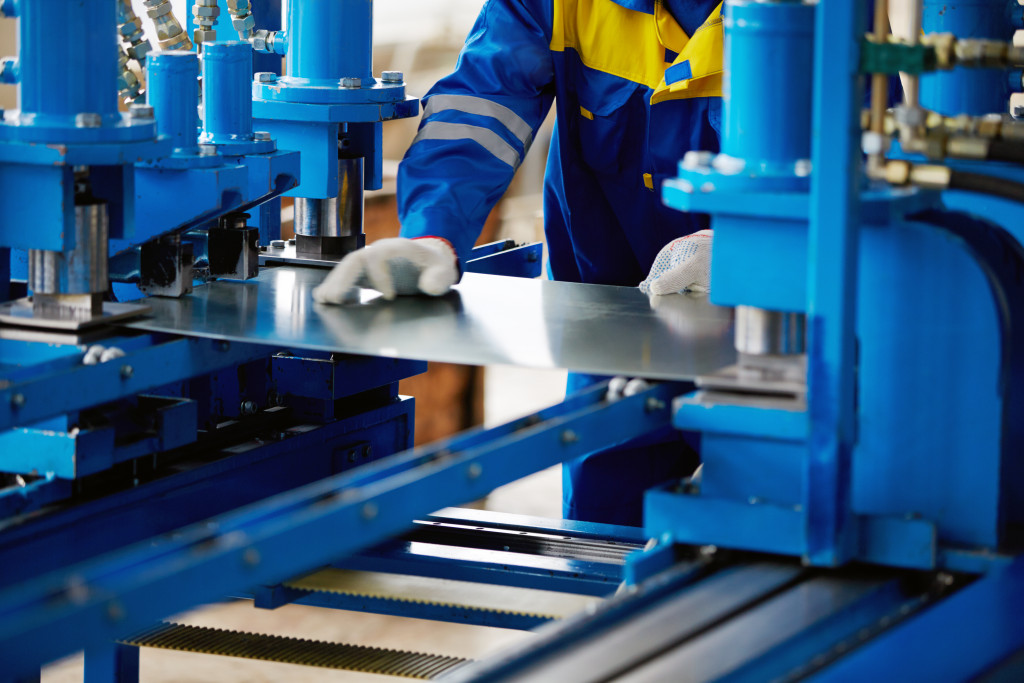- Factory automation enhances efficiency by minimizing downtimes, reducing production costs, and increasing speed.
- Cloud computing improves factory data management, enabling remote operations and facilitating collaboration.
- Artificial Intelligence (AI) in manufacturing enables self-learning machines, optimizes workflows, and reduces labor costs.
- Robotics in manufacturing transforms traditional factories into smart factories, performing complex tasks and improving output efficiency.
- Investment in modern technologies like automation, cloud computing, AI, and robotics is crucial for factories to remain competitive.
The world is increasingly becoming tech-savvy, and factories are no exception. In today’s fast-paced business world, factories must rely on technology to stay efficient and meet customer demand. With the rise in automation, there has been a significant shift in how factories handle their operations. Suppose you’re interested in staying ahead of the game or just want to know what happens in the industrial sector. In that case, it’s essential to understand how factories leverage modern technology to stay efficient. This post will explore how manufacturers use technology to stay ahead of the competition.
Automation
Factory operations no longer rely heavily on manual labor. Automation has transformed the manufacturing industry to help companies remain efficient. It helps factories identify issues early on and fix them promptly, thereby minimizing downtimes and reducing the cost of production. Here are some of the ways factories use automation to stay efficient:
Assembly line automation
In the past, most assembly line jobs, such as welding and painting, were done by human workers. The introduction of automated assembly lines has made the process much faster and more efficient. For example, food factories now use benchtop piston filling machines to quickly and accurately fill bottles or containers with various food products such as yogurt, juice, sauces, etc. This equipment helps ensure an accurate filling rate and reduces human error.
Robotic process automation (RPA)
Robotic process automation (RPA) is a form of automation that uses software robots to automate repetitive tasks such as data entry, customer service, and invoice processing. This technology helps factories reduce the time it takes to complete mundane tasks, allowing them to focus on more complicated processes. It also enhances accuracy and reduces labor costs significantly.

Computer numerical control (CNC) tooling
Computer numerical control (CNC) tooling is a technology that uses computer-controlled machines to produce high-precision parts. This type of tooling helps factories produce complex shapes and components more quickly and accurately than manual methods. It also eliminates the risk of human errors and increases production rates, saving time and money in the long run.
3D printing
3D printing is another technology that has revolutionized the manufacturing industry. This technology allows factories to quickly and accurately fabricate complex parts and components with minimal waste. This helps to reduce costs and speeds up production time significantly.
Data collection & analysis
As technology has progressed, so have the ways factories collect and analyze data. This data is then used to optimize production processes, improve efficiency, and reduce costs. Data collection tools such as sensors and RFID tags are often used to track products throughout the factory floor. The data collected from these devices can be used to identify bottlenecks in the production process, allowing for quick and effective solutions.
Cloud Computing
In today’s fast-paced business world, factories require robust data processing and analysis capabilities. Cloud computing has revolutionized the way factories manage data, improving their efficiency. By using cloud computing, factories can store vast amounts of data in digital form, share data easily with stakeholders, and improve collaboration across departments. Besides this, cloud computing allows factories to access accurate and real-time data from their machines, production lines, and supply chains, making it easy to manage operations remotely.

Artificial Intelligence (AI)
Artificial intelligence has made significant inroads into manufacturing systems, enabling machines to communicate among themselves. By leveraging AI algorithms, machines can learn, adapt, and troubleshoot themselves, increasing factory uptime. Factories can also use AI to optimize their internal processes and manufacturing workflows and reduce recruitment, training, and labor costs.
Robotics
Robots in manufacturing have dramatically increased over the past few years. Robots play a significant role in the success of any factory. They are a crucial component of implementing automated assembly lines, which transform outdated mass-production manufacturing sites into smart factories. Robots can perform simple and complex tasks that humans cannot perform or find uncomfortable, improving overall output efficiency.
Technology has revolutionized how factories operate, reducing production costs while increasing output. It has also helped factories to stay competitive in the market and increase profitability. As technology evolves, factories must innovate and stay ahead of the game. To do this, they must invest in modern technologies such as automation, cloud computing, artificial intelligence, and robotics. By doing so, factories can remain efficient and meet customer demand more quickly and accurately.





